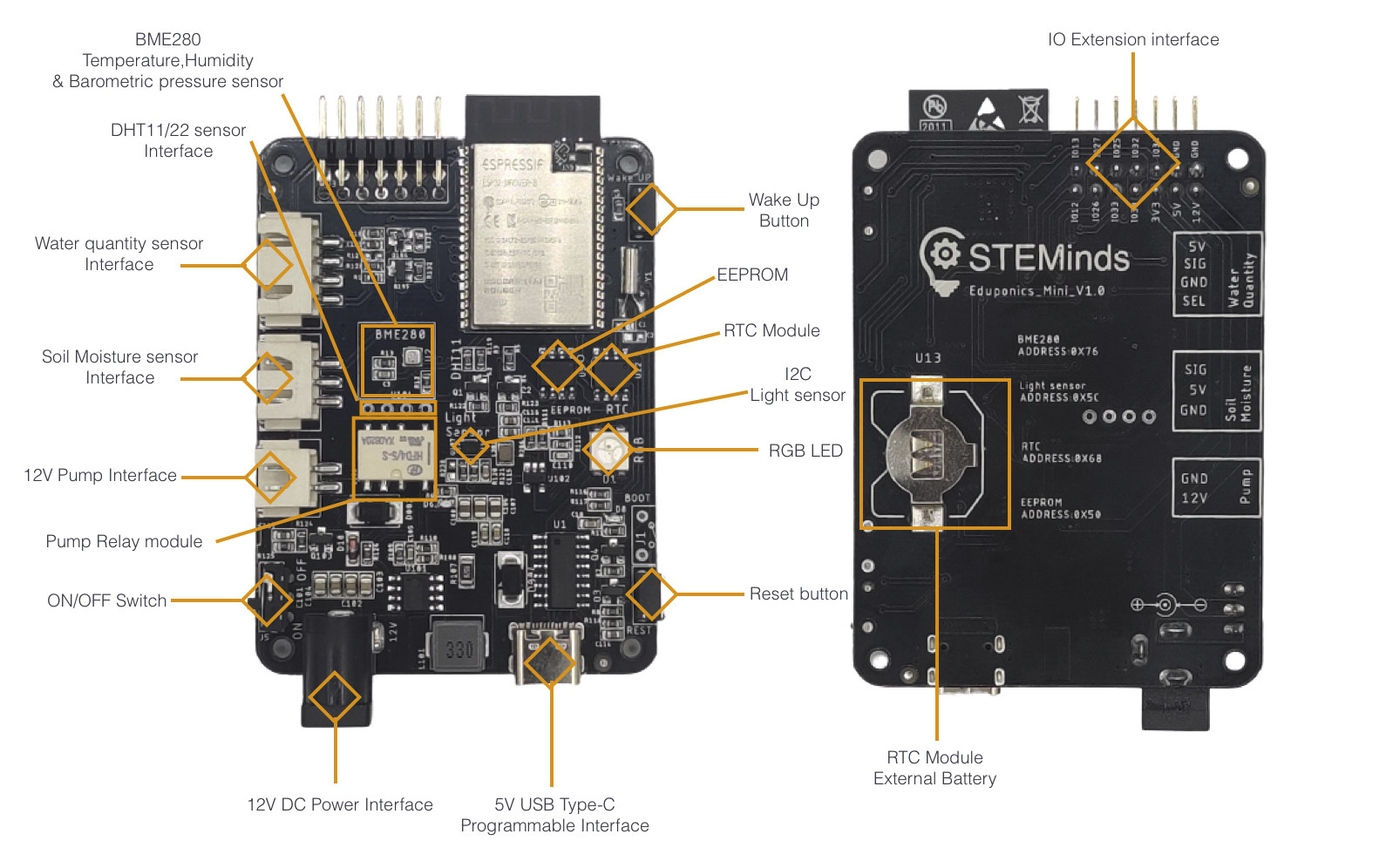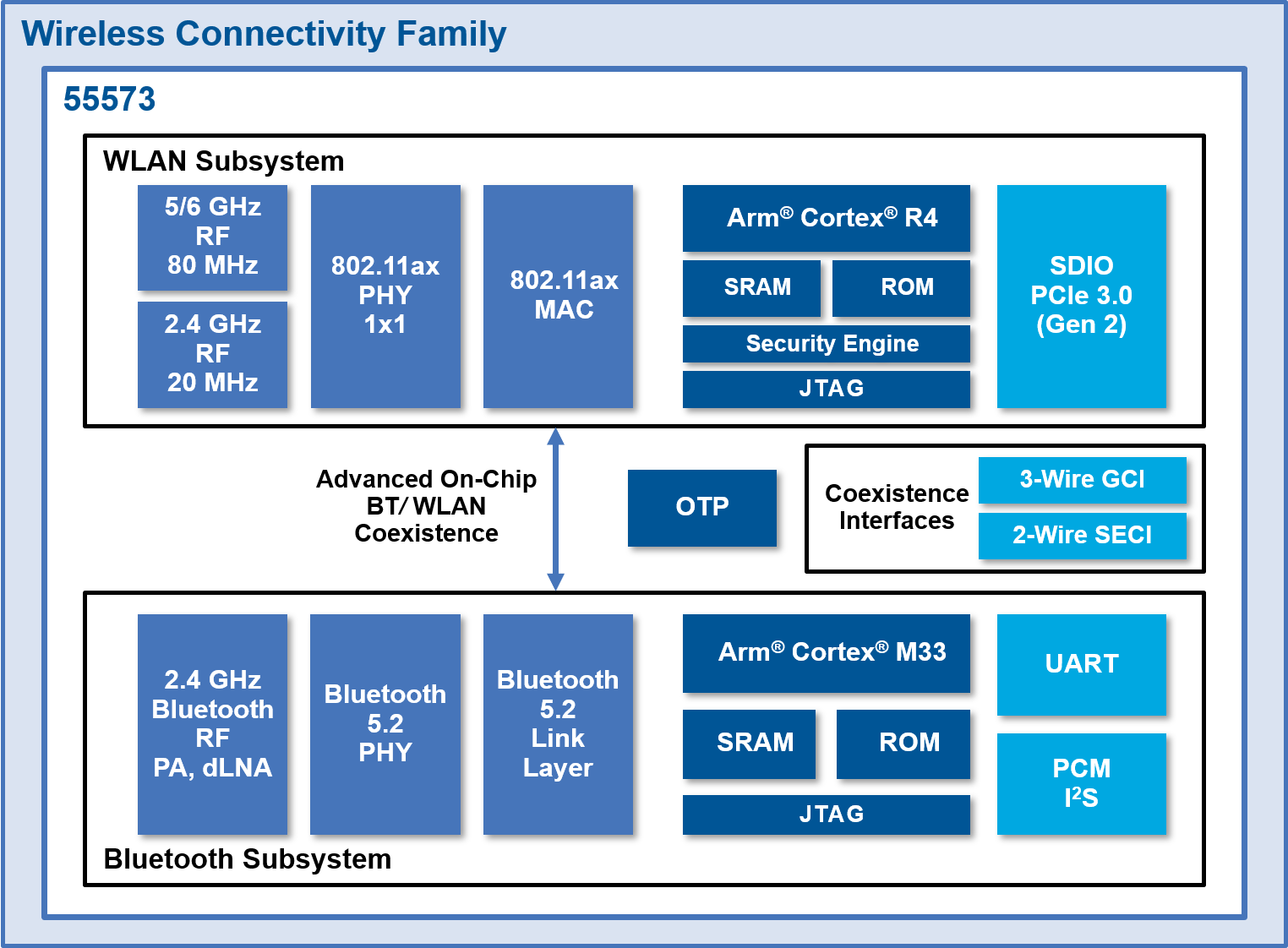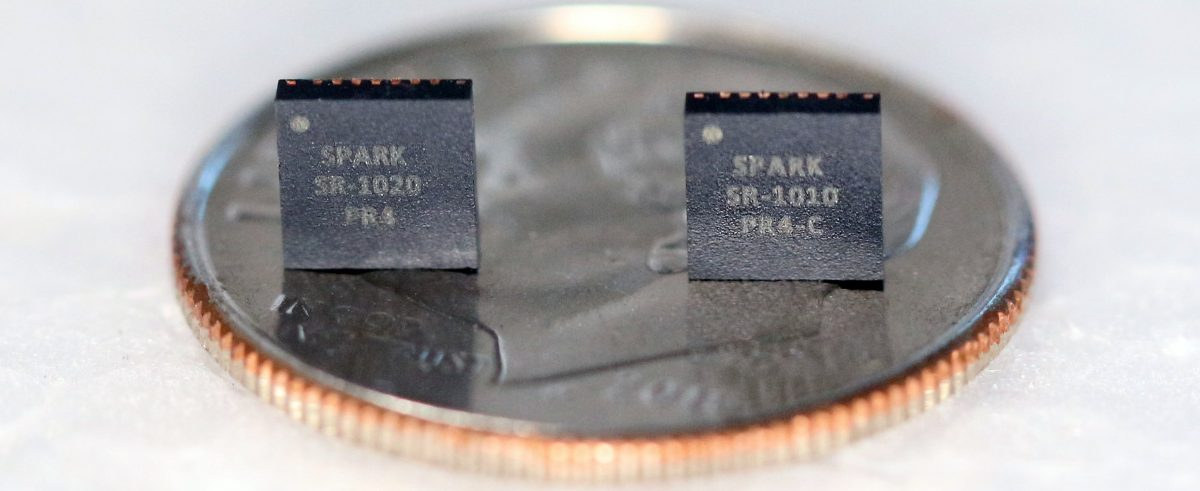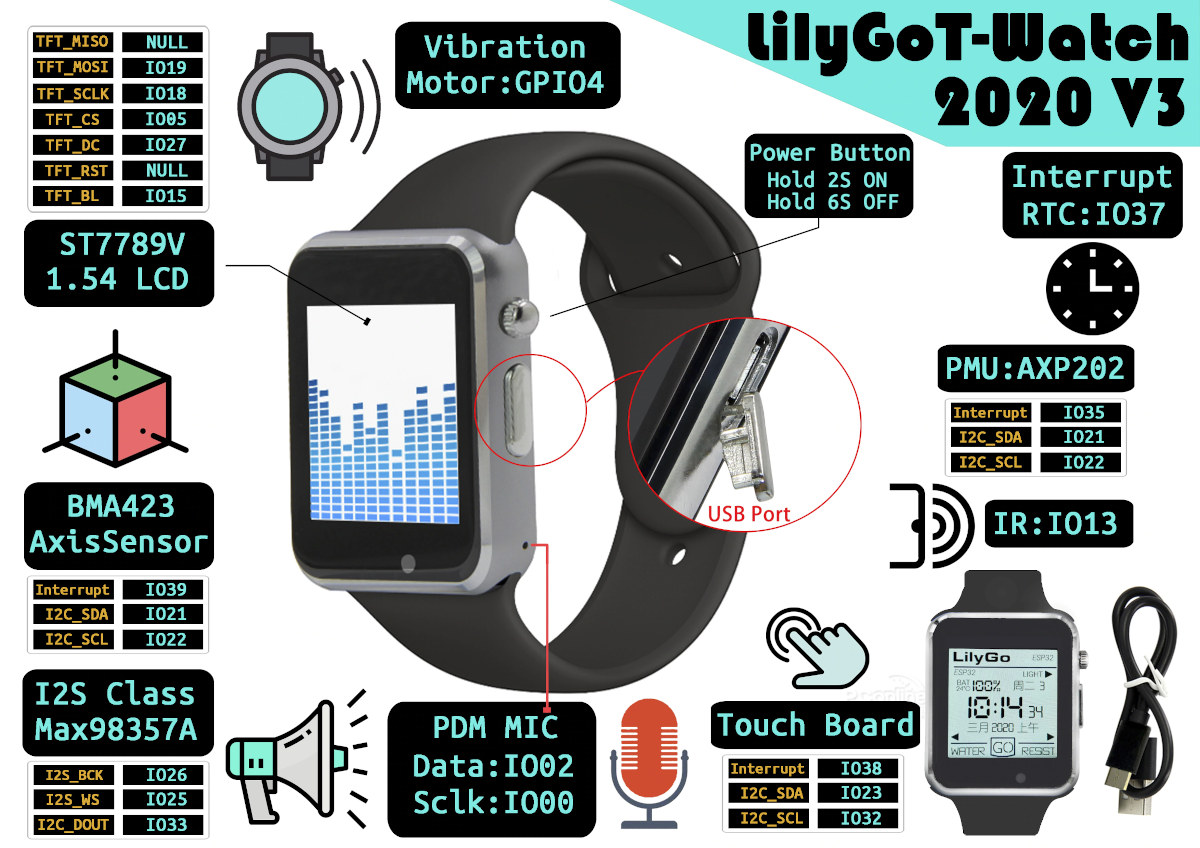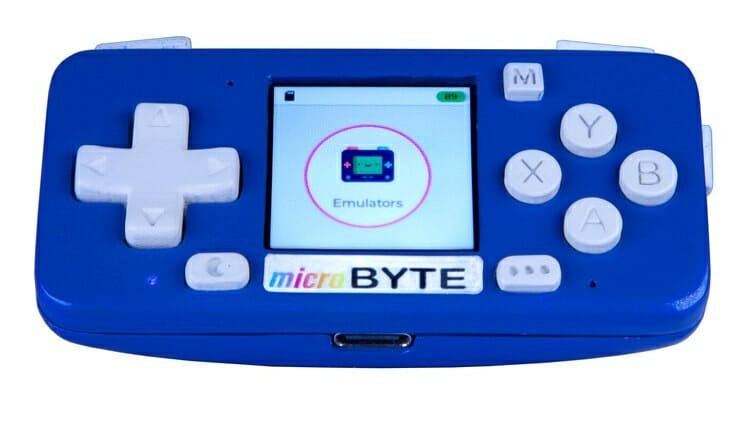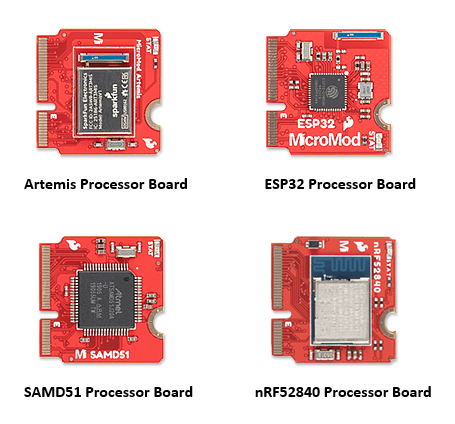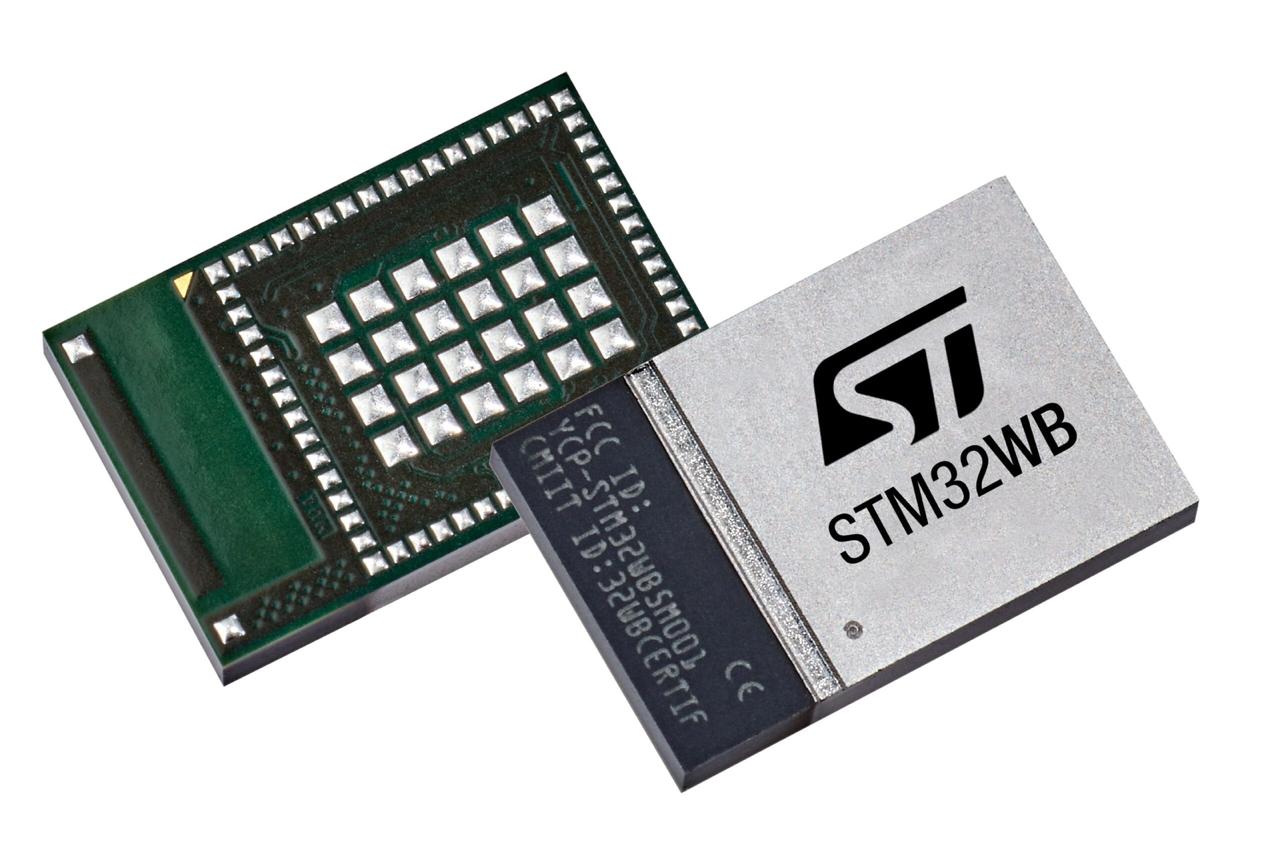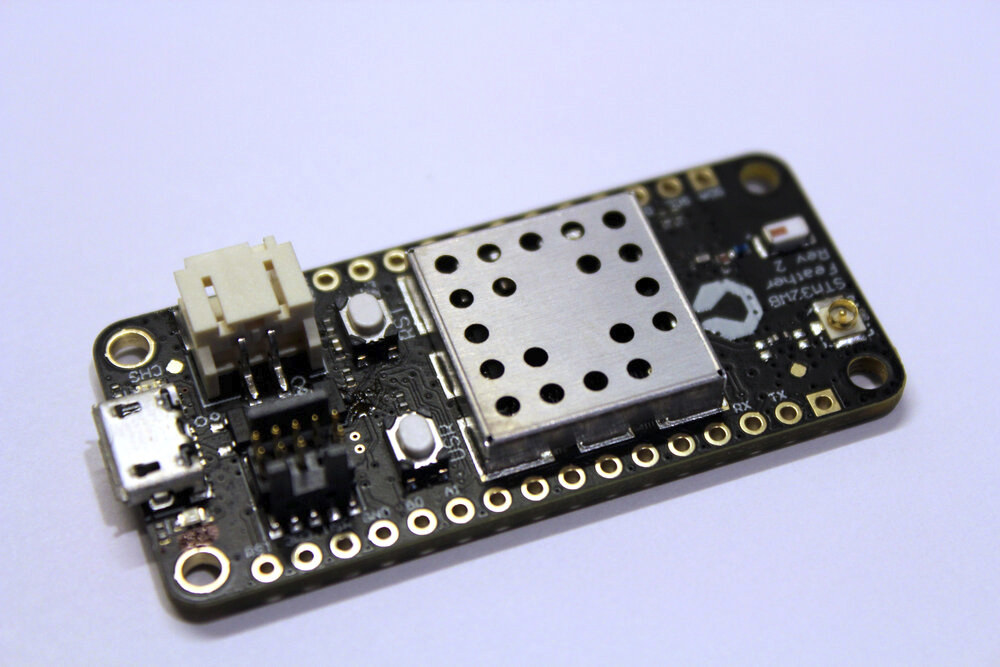One sector of the economy that should benefit the most from the Internet of Things is the agricultural sector, as environmental sensors are needed to optimize yields and also decrease costs with lower electricity and water usage. STEMinds Eduponics Mini Smart Agriculture kit is designed for this purpose. At the heart of the kit is an ESP32 board equipped with light, temperature, humidity, and barometric sensors, as well as interfaces to connect an external pump, a soil moisture sensor, a water quality sensor, and more environmental sensors. Eduponics Mini board specifications: Wireless module – ESP32-WROVER-B module with ESP32 Wi-Fi and Bluetooth SoC, 4MB QSPI flash, 8MB SPRAM, PCB antenna Built-in sensors BH1750 I2C light sensor BME280 I2C temperature, humidity, and barometric sensor Expansion 2-pin connector for 12V pump with built-in relay module 3-pin connector for soil moisture sensor or any other analog or digital device 4-pin connector for water quantity […]
Infineon AIROC CYW5557x WiFI 6/6E targets IoT and streaming devices
WiFi 6E is a new wireless standard that operates in the 6 GHz frequency band. We’ve already seen it used in consumer products such as premium smartphones and routers, as well as some embedded SBCs that take Qualcomm WiFI 6E cards. But now Infineon, who purchased Cypress Semiconductors last year, has unveiled the AIROC CYW5557x family of WiFI 6/6E chipsets designed for the IoT, enterprise and industrial applications for the 1×1 models, and for multimedia, consumer and automotive applications with 2×2 MIMO. Infineon AIROC CYW5557x has three SKUs that share most of the same specifications: Devices CYW55573 with Wi-Fi 6E, 2×2 MIMO CYW55572: with Wi-Fi 6, 2×2 MIMO CYW55571 with Wi-Fi 6E, 1×1 (80MHz) Wireless features WiFI Arm Cortex-R4 core Wi-Fi 6/6E, Tri-band (2.4/5/6 GHz) OFDMA, MU-MIMO, TWT, DCM 2×2 MIMO or 1×1 SISO 20/40/80 MHz channels, 1024-QAM, up to 1.2 Gbps PHY data rate STA and Soft AP mode […]
SPARK UWB technology takes aims at Bluetooth with lower power consumption, higher bandwidth
Bluetooth is omnipresent in smartphones, headsets, smartwatches, and other devices thanks to its low-cost, low power consumption, and good interoperability between devices. But Montréal based SPARK Microsystems claims their SPARK UWB (Ultra-Wide Band) technology is vastly superior to Bluetooth with a data rate of up to 10 Mbps @ 1.5 nJ/bit, power consumption as low as 2 mW while transmitting and receiving at 1 Mbps, and going down to 6 μW at 1 kbps. In other words, that’s up to 40x better energy efficiency, 60x lower latency, and 10x more data throughput as compared to BLE (Bluetooth LE) and without interfering in the 2.4 GHz band. Other highlights include lower wireless latency (50 µs for 1 kb), and time-of-flight (ToF) positioning at 30 cm accuracy for a line-of-sight range of up to 100 meters. The company has launched the SPARK SR1000 family with two models: the SR1010 operating in the […]
TTGO T-Watch-2020 V3 ESP32 watch adds microphone for voice control
Lilygo TTGO T-Watch-2020 is a thin, ESP32 smartwatch programmable with Arduino that was introduced last year. The WiFi and Bluetooth-connected watch is equipped with a 1.54-inch LCD capacitive touch screen, a Class-D amplifier, buzzer, accelerometer, RTC, and a battery. The watch is one of the top-selling devices on Lilygo’s Aliexpress store, and they must have had requirements for voice control, so the company has now launched TTGO T-Watch-2020 V3 based on the same design but adding a PDM microphone. As far as I can TTGO T-Watch-2020 V3 specifications are the same as last year’s model, except for the microphone: SoC – Espressif ESP32 dual-core wireless processor with 520KB SRAM System Memory – 8MB PSRAM Storage – 16MB QSPI flash Display – 1.54-inch LCD capacitive touch screen Audio – Max98357 Class-D amplifier, buzzer/speaker, PDM microphone Connectivity – 802.11b/g/n WiFi 4 and Bluetooth 4.x/5.1 via ESP32 Sensors – BMA423 three-axis accelerometer with […]
microByte ESP32 portable game console comes with a 1.3-inch display (Crowdfunding)
We’ve previously seen programmable, portable game consoles powered by Espressif Systems ESP32 processor with the likes of ODROID-GO or WiFiBoy32 both equipped with a 2.4-inch display, and design to play retro games or create IoT projects with a small display thanks to I/O headers. But if for some reason, you’d like an even more compact ESP32 portable game console based on the WiFi & Bluetooth SoC, Byte-Mix Labs microByte may be what you are looking for thanks to a tiny 1.3-inch square display. microByte specifications: Wireless module – ESP32-WROVER-E module with ESP32 dual-core processor @ 240 MHz, 8 MB PSRAM, 16 MB flash, and integrated Wi-Fi and Bluetooth antenna Storage – MIcroSD card slot Display – 1.3-inch ST7789 IPS Screen with 240 x 240 pixel resolution, 60 Hz max refresh frequency Audio – On-board speaker powered by a MAX98357AETE+T I2S amplifier Controls – 13x onboard buttons with 8x Inductive direction […]
MicroMod modular ecosystem offers M.2 microcontrollers cards and carrier boards
MicroMod is a modular interface ecosystem for quick embedded development and prototyping. MicroMod comes with two components, that is a microcontroller “processor board” and a carrier board. PC industry’s M.2 connector is the interface between these two components. The carrier boards are for the usage of various peripherals and the processor board act as the brain of the application system. MicroMod processor board has a dimension of 22×22 mm that can be easily fitted on the carrier boards. Although, the original M.2 standard was dedicated to swapping out peripherals where a user could swap one component with the other one. The MicroMod standard is for swapping out microcontrollers according to the functional and application requirements. MicroMod Processor Boards Artemis Processor Board comes with an Ambiq Apollo 3 Blue Arm Cortex-M4F with BLE 5.0 running up to 96MHz and a power rating of less than 5mW. It also supports the TensorFlow […]
STM32WB5MMG Wireless Module simplifies Bluetooth LE, Zigbee, OpenThread connectivity
The STM32WB5MMG (STM32) is a wireless microcontroller module by STMicroelectronics. It is a compact ultra-low-power module that allows customers to design 2-layer PCBs and integrates everything up to the antenna, including an IPD (integrated passive device) for reliable antenna matching in order to reduce the overall costs. The STM32 wireless module is compatible with BLE (Bluetooth Low Energy) 5.0, OpenThread, Zigbee 3.0, dynamic and static concurrent modes, and 802.15.4 proprietary protocols. It also supports simultaneous dual-protocol mode that allows IEEE 802.15.4 radio-based protocols like Zigbee 3.0 and OpenThread for direct connection with any BLE device. Overview of STM32 Wireless Module The STM32 wireless module is a SiP-LGA86 package (System in Package Land Grid Array) with various external components including: STMicro STM32WB55 Cortex-M4/M0+ wireless MCU LSE crystal HSE crystal Passive components for SMPS Antenna matching and antenna IPD for RF matching and harmonics rejection Key Features of STM32 Wireless Module Dedicated […]
STM32WB Feather board features STM32WB55 Bluetooth 5.0 SoC
STMicro announced the availability of their first wireless STM32 MCU last year with STM32WB55 Bluetooth 5.0 and 802.15.4 Cortex-M4/M0+ microcontroller together with P-NUCLEO-WB55 Development Pack. A company called Reclaimer Labs has now designed a Feather-compatible board with the wireless MCU, more specifically STM32WBCGU6, and simply called STM32WB Feather board. STM32WB Feather Board specifications: Wireless MCU – STMicro STM32WB55CG Bluetooth SoC with Arm Cortex-M4 application core, Arm Cortex-M0+ Bluetooth co-processor, 1 MB Flash storage, 256 KB of SRAM, USB ROM Bootloader Storage – 128 Mbit SPI NOR Flash memory Bluetooth antennas – On-board chip antenna, u.Fl connector for external antenna Expansion – 16-pin + 12-pin unpopulated headers with 6x analog input pins UART, I2C, SPI, and 7x GPIO pins Debugging – Standard SWD debug connector Misc – User button and LED, 32.768 kHz crystal for LSE/RTC Power Supply 5V via micro USB port 2-pin battery header, LiPo battery charger Dimensions – […]


